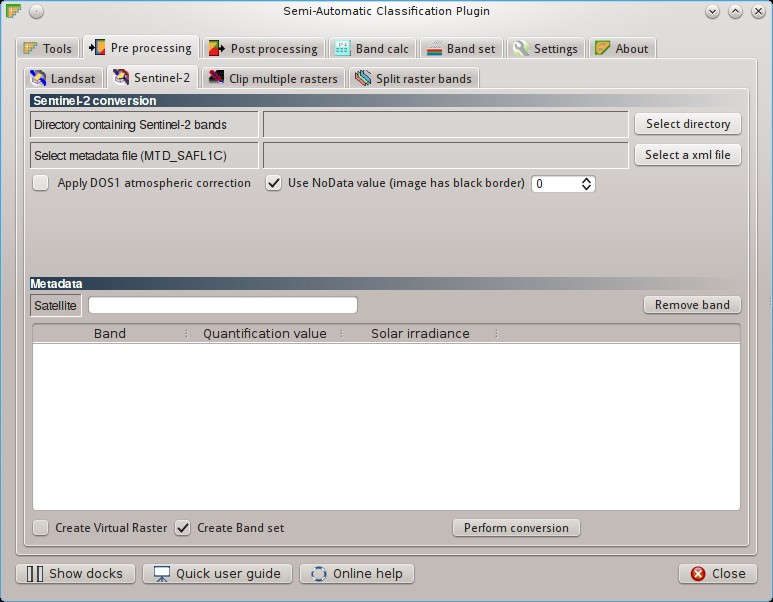This post is about a major update for the Semi-Automatic Classification Plugin for QGIS, version 4.9.0.
Following the changelog:
-updated the Sentinel-2 download for downloading single granules and selected bands
-updated the Sentinel-2 Pre processing tab for converting bands to TOA reflectance and surface reflectance (using DOS1)
-updated the Sentinel-2 Pre processing tab for converting bands to TOA reflectance and surface reflectance (using DOS1)
If the option "Pre process images" is checked, it is possible to download multiple granules and convert all the bands to reflectance.
In addition, it is possible to convert automatically the downloaded bands to TOA reflectance, or surface reflectance (using the DOS1 method). It requires the metadata file of the product (an xml file containing MTD_SAFL1C in the name thereof) to be included in the directory containing the Sentinel-2 bands.
Following, a brief video about this new tools.
Sentinel-2 is a new European satellite developed in the frame of Copernicus land monitoring services, which acquires 13 spectral bands with the spatial resolution of 10m, 20m and 60m depending on the band (see the following table).
Sentinel-2 Bands
|
Central Wavelength [micrometers]
|
Resolution [meters]
|
Band 1 - Coastal aerosol
|
0.443
|
60
|
Band 2 - Blue
|
0.490
|
10
|
Band 3 - Green
|
0.560
|
10
|
Band 4 - Red
|
0.665
|
10
|
Band 5 - Vegetation Red Edge
|
0.705
|
20
|
Band 6 - Vegetation Red Edge
|
0.740
|
20
|
Band 7 - Vegetation Red Edge
|
0.783
|
20
|
Band 8 - NIR
|
0.842
|
10
|
Band 8A - Vegetation Red Edge
|
0.865
|
20
|
Band 9 - Water vapour
|
0.945
|
60
|
Band 10 - SWIR - Cirrus
|
1.375
|
60
|
Band 11 - SWIR
|
1.610
|
20
|
Band 12 - SWIR
|
2.190
|
20
|
The spatial and spectral characteristics of Sentinel-2 are designed for the discrimination of land cover materials, especially using supervised classifications. These numerous bands are very useful for land cover monitoring, allowing for the accurate calculation of spectral signatures (some examples in the following image).
For any comment or question, join the Facebook group and a Google+ Community about the Semi-Automatic Classification Plugin.



